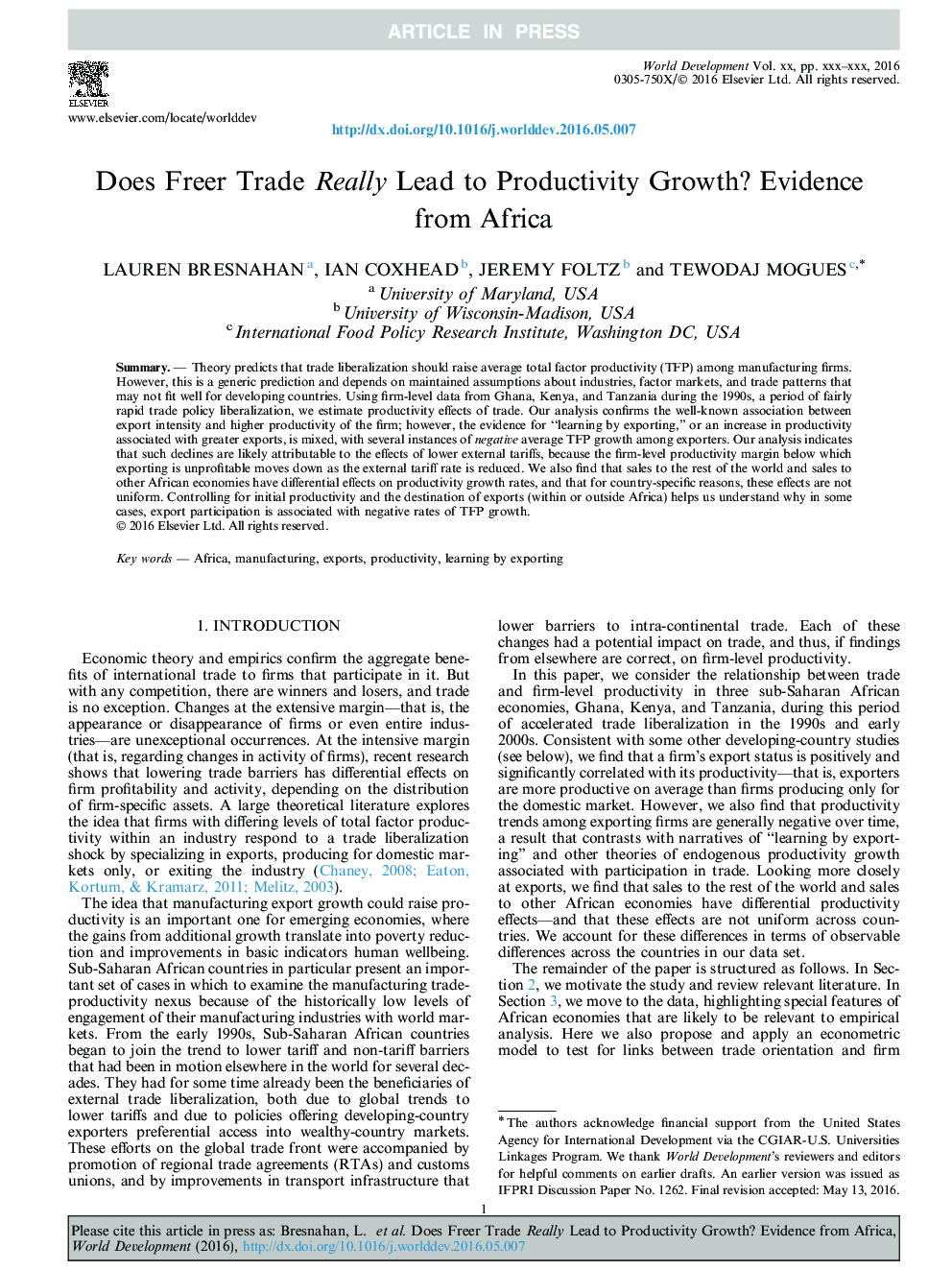| Article ID | Journal | Published Year | Pages | File Type |
|---|---|---|---|---|
| 7392424 | World Development | 2016 | 12 Pages |
Abstract
Theory predicts that trade liberalization should raise average total factor productivity (TFP) among manufacturing firms. However, this is a generic prediction and depends on maintained assumptions about industries, factor markets, and trade patterns that may not fit well for developing countries. Using firm-level data from Ghana, Kenya, and Tanzania during the 1990s, a period of fairly rapid trade policy liberalization, we estimate productivity effects of trade. Our analysis confirms the well-known association between export intensity and higher productivity of the firm; however, the evidence for “learning by exporting,” or an increase in productivity associated with greater exports, is mixed, with several instances of negative average TFP growth among exporters. Our analysis indicates that such declines are likely attributable to the effects of lower external tariffs, because the firm-level productivity margin below which exporting is unprofitable moves down as the external tariff rate is reduced. We also find that sales to the rest of the world and sales to other African economies have differential effects on productivity growth rates, and that for country-specific reasons, these effects are not uniform. Controlling for initial productivity and the destination of exports (within or outside Africa) helps us understand why in some cases, export participation is associated with negative rates of TFP growth.
Related Topics
Social Sciences and Humanities
Economics, Econometrics and Finance
Economics and Econometrics
Authors
Lauren Bresnahan, Ian Coxhead, Jeremy Foltz, Tewodaj Mogues,
